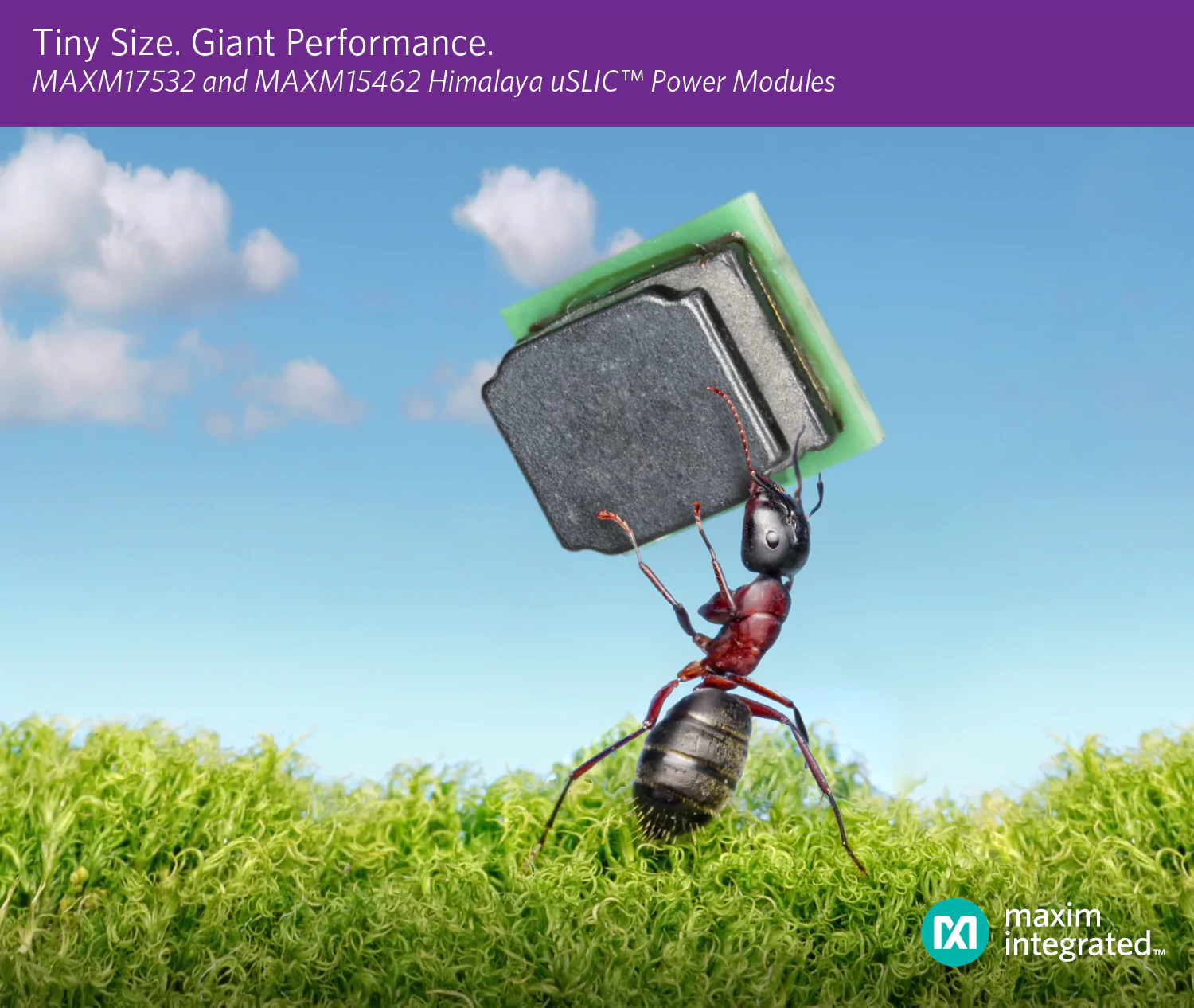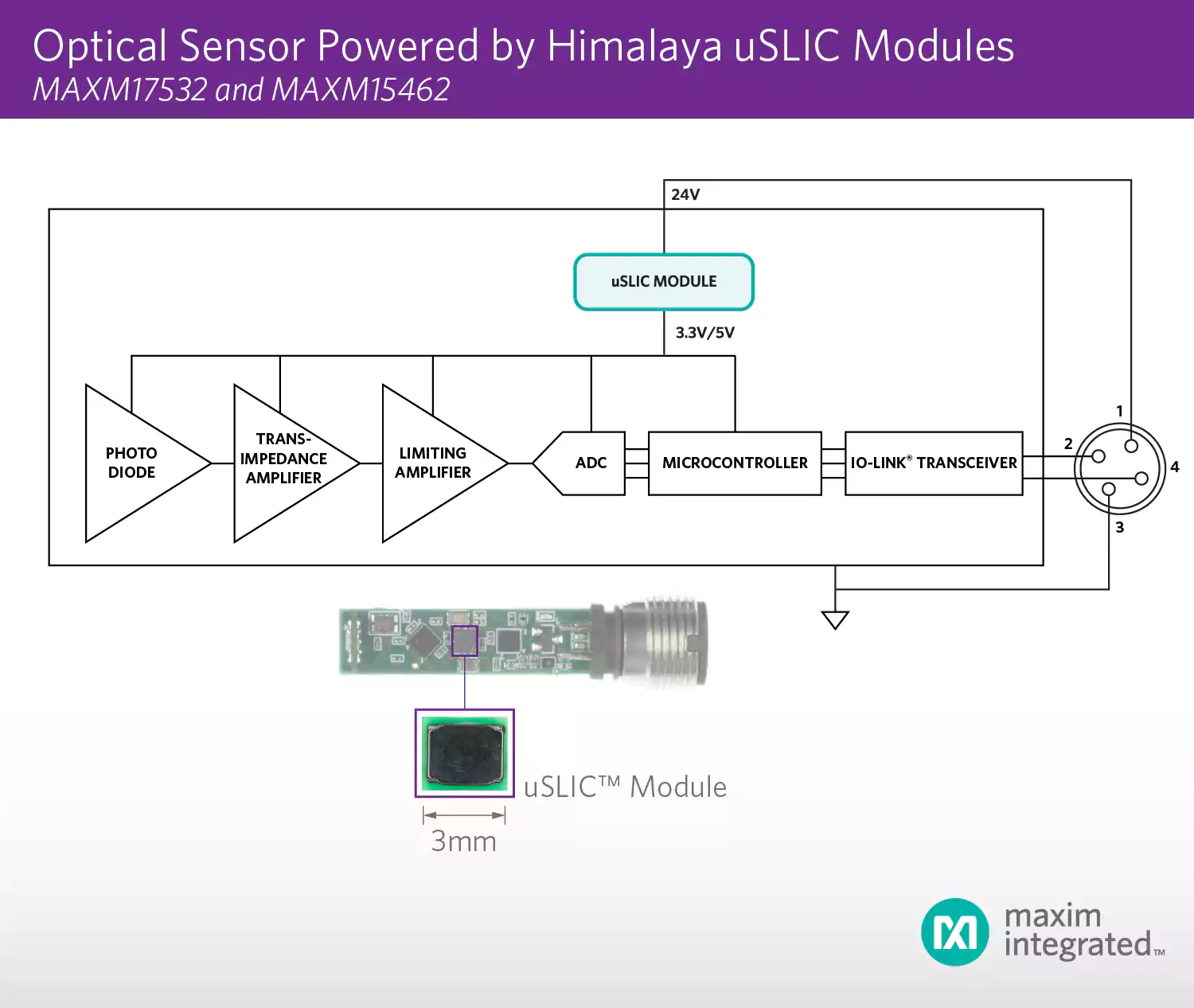 Designers working on space-constrained applications can now dramatically reduce solution size and increase efficiency with the family of micro system-level IC (“uSLIC”) modules from Maxim Integrated Products, Inc.
Designers working on space-constrained applications can now dramatically reduce solution size and increase efficiency with the family of micro system-level IC (“uSLIC”) modules from Maxim Integrated Products, Inc.
The MAXM17532 and MAXM15462 ul
With dramatic advances in sensing, connectivity, and cloud computing, miniaturization is the next frontier that enables emerging trends such as artificial intelligence and machine learning. Next-generation system designs from industrial internet of things (IIoT) sensors, defense electronics, and network infrastructure equipment to medical and consumer devices need to collect, synthesize, and act upon data. This new intelligence requires more power in ever-reducing space without impacting thermal budget, making conventional solutions unviable and complicated. To fit into small enclosures that are deployed in harsh mechanical, electrical, and thermal environments means designers need shock and vibration tolerance, EMI compliance, increased energy efficiency, high temperature operation, and small size–a multidimensional challenge.
Maxim’s uSLIC power modules shrink the solution size of the power supply by 2.25x with an ultra-small package size. This is achieved by integrating a synchronous wide-input Himalaya buck regulator with built-in FETs, compensation, and other functions with an integrated inductor. The combination of these components enables the designer to use the modules in small space-constrained systems while complying with mechanical and EMI standards. In addition, engineers simplify designs as they no longer need to deal with conventional bulky, power hungry regulators. Instead, they can integrate the ready-made power module into almost the same space of a tiny LDO. In such a small size, designers can achieve high efficiency and lower noise with increased stability. The uSLIC DC-DC buck regulator modules, which operate over a wide input range as low as 4V to as high as 42V, support multiple applications across nominal input voltages of 5V, 12V, 24V, and 36V with reliable headroom for today’s demanding applications. They operate over the -40-degree Celsius to +125-degree Celsius temperature range.
Key Advantages
- Smallest Solution Size: 2.25x smaller solution size compared to competing solutions; available in a compact, 10-pin 2.6mm x 3.0mm x 1.5mm uSLIC package
- High Efficiency: Peak efficiency of 90% and higher in smallest form factor (less than 15mm2 solution size); superior thermal performance
- Simplified Design: Fully synchronous buck regulator with built-in compensation; integrated inductor for ease of design and faster time to market
- Rugged: Compliant to CISPR 22 (EN 55022) Class B EMC emission standards, as well as JESD22-B103/B104/B111 drop, shock, and vibration standards
MAXM17532 is available for $2.35 (1000-up, FOB USA); MAXM15462 is available for $2.53 (1000-up, FOB USA); Both are fully qualified, in production, and available at Maxim’s website as well as select authorized distributors
MAXM15462EVKIT# and MAXM17532E
EE-Sim simulation models are available; For details, visit http://bit.ly/EE_Sim_



Leave a Reply